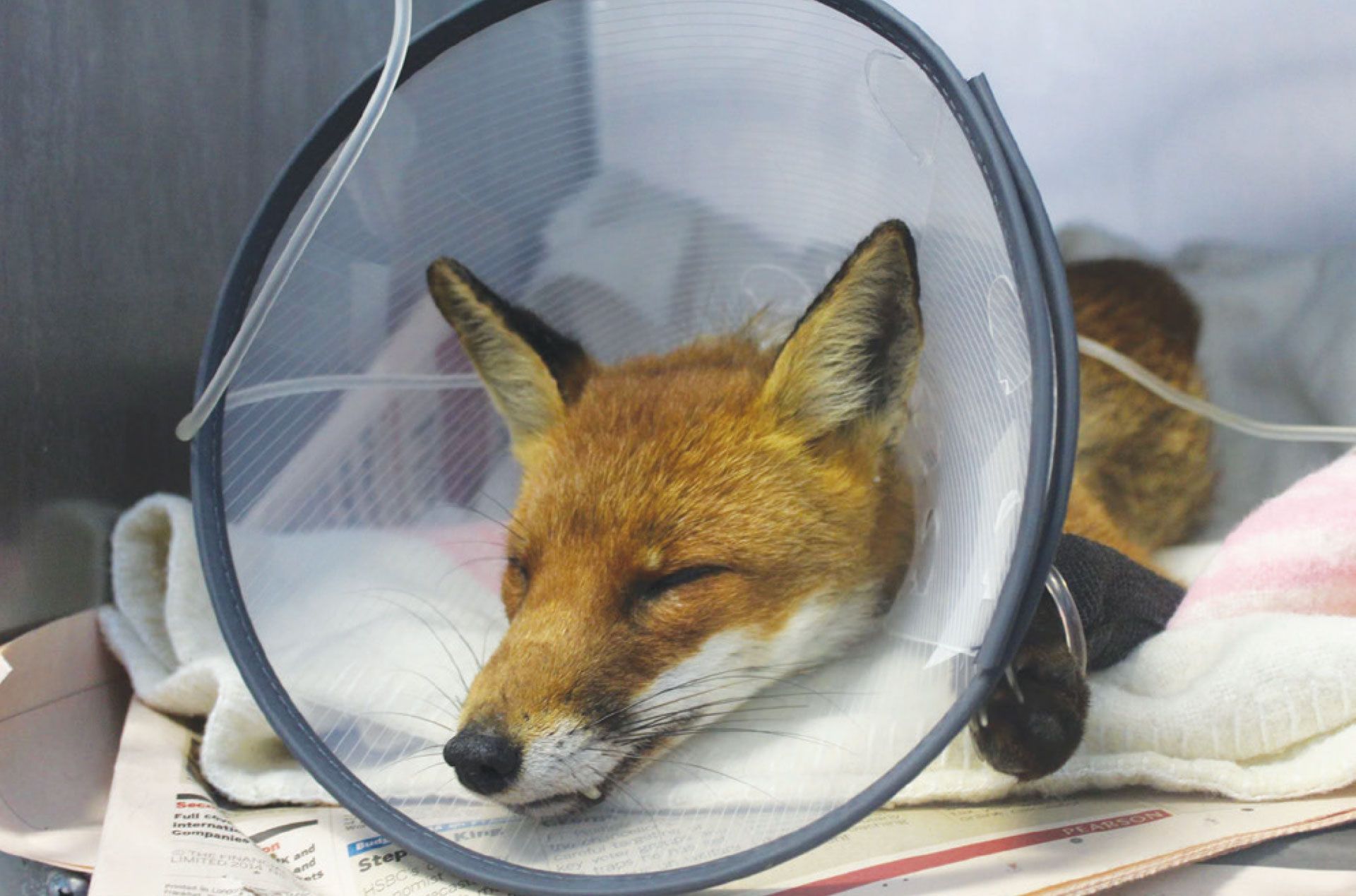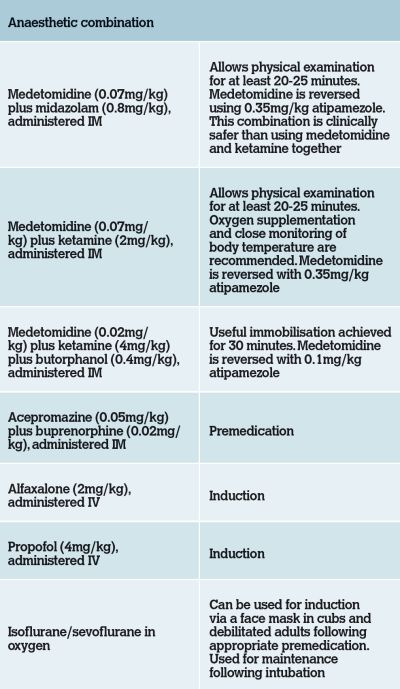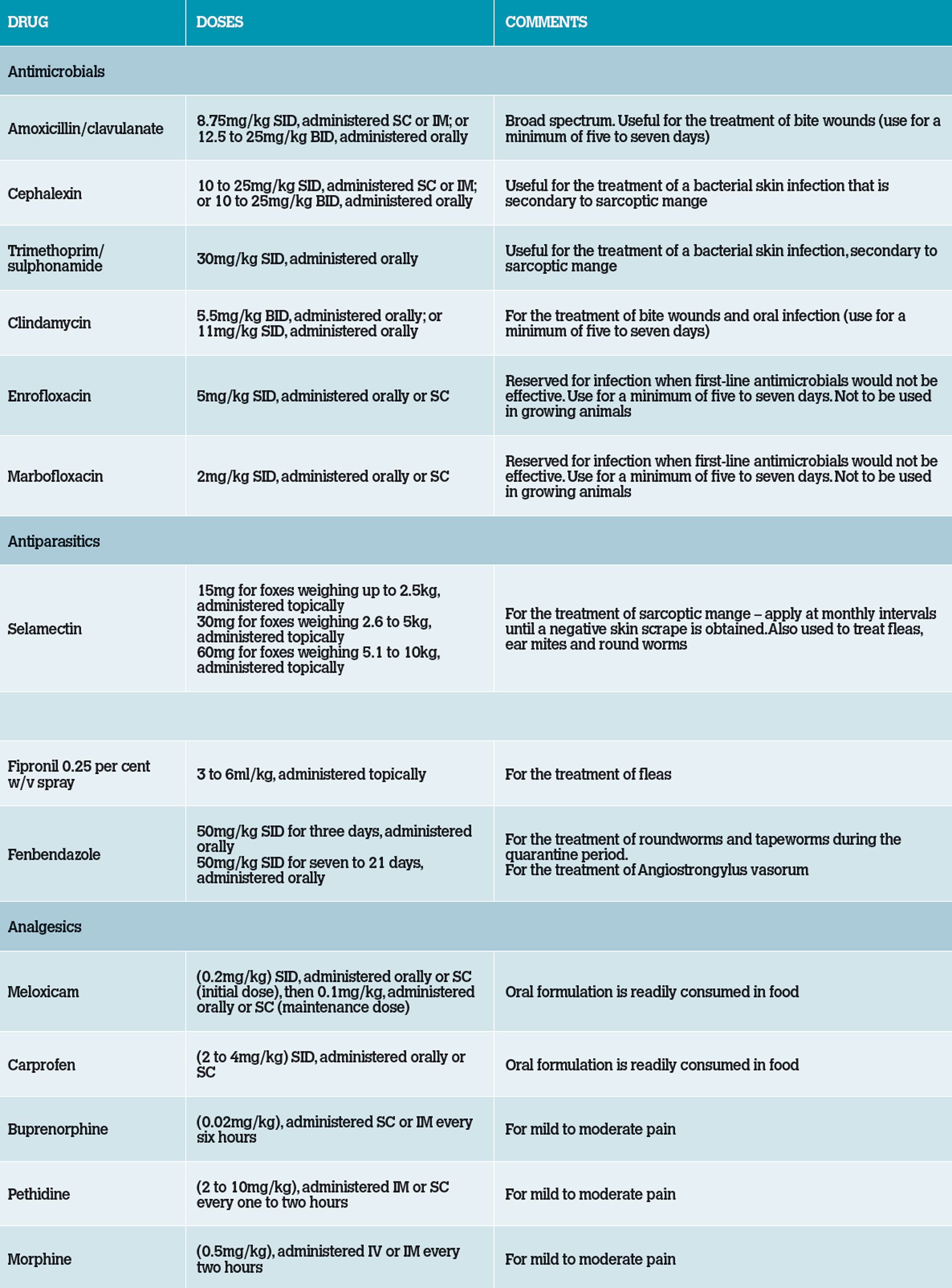How to approach fox casualties in general practice
Aoife Hand MVB O’Malley Veterinary Hospital, Bray, aims to equip general practitioners with the tools to appropriately triage and treat hedgehogs without compromising their welfare

Photo: Andrew Kelly.
The red fox (Vulpes vulpes), or ‘sionnach’ (as gaeilge), is a wild mammal that is native to Ireland, the UK, and most of the northern hemisphere. However, in comparison to many other native wild species, red foxes are infrequently encountered in veterinary practice. In recent years there has been a significant shift in the distribution of the red fox population throughout Ireland, resulting in greater urbanisation of the species. Due to increased exposure to mankind, foxes are now more vulnerable to many anthropogenic factors that may result in accident or injury, leading to their presentation in veterinary practices. Unlike many other wildlife species, foxes are not protected under the Wildlife Acts 1976-2012, hence, a licence is not required for their possession. However, it is morally unacceptable to keep any wild animal as a pet, and all animals are protected under the Animal Health and Welfare Act. The aim of this article is to help practitioners successfully navigate vulpine cases, while prioritising the welfare of these astute animals.
Foxes are a nocturnal species, and live in a family group, emerging from their den at night to hunt and forage for food. They are omnivorous, with a diet consisting primarily of small mammals, birds, invertebrates, fruit and carrion, depending on seasonal availability. The vixen typically weighs 3.5-7.5kg, while the dog usually weighs 5.5-9kg. Their seasonal oestrus cycle occurs for three weeks between December and February, with cubs typically born at the end of March, following a 53-day gestation. Cubs are born a dark chocolate colour, only developing their characteristic red coat at around six weeks of age. One month after birth the cubs will begin to venture outside of their den, with the vixen leaving them for extended periods at a time. Cubs typically leave their family group at six months of age, and will spread out in search of their own territory. Sexual maturity is usually reached by 10 months. It is during this juvenile phase that foxes are exposed to a greater number of hazards, and are therefore at a higher risk of illness or injury. While foxes can live up to nine years in the wild, the average lifespan of an urban fox is 12 months, primarily due to the prevalence of road traffic accidents.8

Figure 1: Cubs are born a dark chocolate colour. Photo: Dan Donoher.

Figure 2: The average lifespan of an urban fox is 12 months, primarily due to the prevalence of road traffic accidents.
Triage
The key to successfully triaging any wildlife case, is to begin by gathering a detailed and accurate history from the finder. It is important to ascertain if there were any abnormalities in the fox’s behaviour when it was first located by the finder: lameness, ataxia, generalised weakness. Where exactly the fox was found is of utmost importance, as it will allow rehabilitators to release the fox close to its original territory. This is especially important in the case of cubs that are often unnecessarily presented by members of the public who assume that they are injured or have been abandoned. These cubs should be returned immediately to the site where they were found and the site should then be checked the following morning to ensure the vixen has returned.
Foxes can act as reservoirs for sarcoptic mange and leptospirosis, both diseases with zoonotic potential, which is why appropriate PPE must always be worn while handling wild foxes. It is also important to be aware that foxes may resort to biting when feeling threatened. Wearing thick gloves or using a towel when handling can protect you from injury; however, sedation will reduce the stress of the animal and allow for a more detailed clinical examination. If the patient is severely debilitated, they are likely to be relatively easy to handle, and anaesthesia should be avoided if possible. A standard dog muzzle can be used to prevent biting during your clinical examination.
Complete a thorough physical exam as you would for a dog or cat. Weigh the fox early on in your examination and assess body condition. A significantly reduced body condition scoring (BCS) indicates that the fox’s condition is likely to be chronic. However, it is important to note that body condition varies throughout the year, and a vixen rearing cubs is likely to be lean. The fox has a resting heart rate of 125bpm; however, this is likely to be elevated due to the stress of examination. Their normal rectal temperature falls between 39-40°C.9 The primary aim of the initial triage is to determine the likelihood of future release and ability to compete in the wild with its conspecifics. If complete recovery is unlikely or appropriate facilities for rehabilitation are not available, the patient should be humanely euthanised on welfare grounds. Both Wildlife Rehabilitation Ireland and the Irish Society for the Prevention of Cruelty to Animals do not condone the keeping of wild foxes in captivity if the ultimate goal is not to release them back into the wild.
Blood sampling is best done via the jugular or cephalic veins, and can be done in a conscious animal if well restrained. Indications for routine bloodwork are similar to those of domestic dogs. Radiography is used in the case of potential fractures to assess the extent of injury and the potential for successful repair. Ultrasonography can be employed, but extensive areas should not be clipped as this can significantly impact thermoregulation, especially in the winter months. Faecal parasitology can provide a good insight into the overall endoparasite burden of the individual, while skin scrapes can be used to confirm a diagnosis of sarcoptic mange. It is important not to confuse hair loss in lactating vixens and naturally moulting individuals with that associated with mange.1
Husbandry and nutrition
The fox may have been compromised for some time prior to being brought into your clinic, and it is vital that issues such as starvation, dehydration, and hypothermia be addressed immediately. Supplementary heat should be provided to any animals suffering from shock and young cubs less than four weeks of age (cubs under two weeks of age are unable to thermoregulate). Mild dehydration can be managed with oral rehydration fluids and subcutaneous boluses, while more severe dehydration requires intravenous fluid therapy. Always place an Elizabethan collar on foxes with IV catheters as they are prone to chewing. All animals presenting with wounds should have the sites clipped, cleaned and thoroughly lavaged to prevent secondary infection. Appropriate analgesia should be given immediately to all injured animals and antibiotic therapy should be used where necessary.
House foxes in a quiet part of the practice, as far away from domestic pets as possible. Cubs should be housed in a pet carrier or kennel, while adults are generally easier to manage if kept in a walk-in kennel. Always provide an area for the fox to hide, and ensure all enclosures are covered, as foxes will have no issue scaling walls. Feeding is relatively simple in foxes, with cubs readily drinking canine milk replacer. Adults will eat tinned dog food, but will typically prefer dead, day old chicks, if available. As mentioned previously, 'orphaned' or 'abandoned' cubs may be presented unnecessarily, as it is normal behaviour for cubs to begin emerging from the den from about four weeks of age. If the cub is underweight or dehydrated on presentation, they are more likely to be a true abandoned cub and will require veterinary intervention. It is vital that all unnecessary contact with cubs be avoided to prevent imprinting, and if possible, they should be housed with other cubs of a similar age. Cubs are progressively weaned from milk to solid foods around four weeks of age, and this should be replicated in captivity.

Figure 3: An Elizabethan collar should always be placed on a fox with IV catheters to prevent chewing.

Figure 4: All animals presenting with wounds should have the sites clipped, cleaned and thoroughly lavaged to prevent secondary infection.
PHARMACOLOGICAL INTERVENTIONS
While no drugs are licensed for specific use in foxes, as a rule of thumb, foxes should be treated with the same drugs and dosages as domestic dogs. Oral medications, given in food, are preferable as they reduce handling and minimise stress. Antimicrobials should be used judiciously to reduce the risk of resistance, and in response to culture and sensitivity testing, where possible. While still done in some rehabilitation facilities, there is little evidence to suggest that the vaccination of foxes with canine multivalent vaccines for CDV, CAV-1, and leptospirosis provides any lasting immunity.5 Anaesthesia is used to enable clinical examinations and diagnostic procedures in fractious animals. It can also be used for the purpose of euthanasia. An accurate weight must always be obtained before any anaesthetic agents are administered, to prevent inaccurate dosing. The quadriceps or gluteal muscles are the ideal locations to administer injectable agents. Once completely anaesthetised, the fox should be intubated and maintained on an inhalant anaesthetic throughout. As in domestic patients, it is important to monitor cardiovascular and respiratory function throughout the anaesthesia. While analgesia should be provided with NSAIDs and opioids, as in domestic dogs, it is important to acknowledge the severity of pain and potential for contraindications, such as pregnancy.

Table 14: Anaesthetic agents commonly used in foxes. Adapted from the BSAVA Manual of Wildlife Casualties.
Common presentations
Trauma: Road traffic accidents, entanglement and dog attacks are frequent causes of vulpine injuries. Fractures can be repaired, as in domestic species, but repair should not be attempted unless complete recovery and return to normal function is anticipated. Complex fractures that may potentially inhibit future hunting capabilities or parturition are an indication for immediate euthanasia. While some urban foxes may tolerate being housed in a kennel for a short period of time, bear in mind that the stress of long-term captivity can have deleterious effects on the animal’s recovery and may be a contraindication for surgical intervention. Bite wounds usually result in abscess formation with the potential for cellulitis and septicaemia. B-haemolytic Streptococci are often found in these wounds and should be treated with appropriate antimicrobial therapy.3 Infected wounds may lead to secondary toxic liver damage or haemolysis, resulting in severe jaundice and indicating immediate euthanasia.3 Pressure necrosis and reperfusion injury are common sequalae to entanglement or snare injuries. Always examine the fox’s mouth as they may have tried to disentangle themselves resulting in oral injuries. While injuries may seem mild at first, it is important to remember that the full extent of an injury may not become apparent for several days following presentation.
Infectious diseases
Viral infections: Red foxes can act as carriers for viruses affecting domestic dogs. Infectious canine hepatitis (CAV-1) occurs sporadically in our native fox population.13 Clinical signs include: anorexia, rhinitis, haemorrhagic diarrhoea, jaundice, hyperexcitability, seizures, paralysis, coma and death. The prognosis of a fox showing clinical signs of ICH is guarded, and even if recovery occurs, there can be continued urinary excretion of the virus for up to six months after infection. Due to the high risk of transmission, euthanasia is often recommended in these cases. Canine distemper virus has been noted in wild fox populations, although the significance of this disease in the species is still unknown.10 Juveniles are the most susceptible, and clinical signs include: depression, mucopurulent oculonasal discharge, and a dry or moist cough. Central nervous system (CNS) signs may develop and euthanasia is advocated in these cases. While rabies virus is not currently present in Irish wildlife populations, it is important to be aware of its existence and to contact your local DAFM office immediately if any suspect cases are presented. Experimental infection with canine parvovirus does not result in clinical disease in the red fox, so it is unlikely to be of clinical concern in this species.2
Bacterial infections: Leptospirosis has been noted in Irish fox populations and can result in severe jaundice often leading to severe debilitation or death. Foxes may develop many secondary bacterial infections from bite wounds or from ingestion of contaminated prey. Foxes are currently not believed to be maintenance hosts for Mycobacterium bovis infection.7
Ectoparasites: Sarcoptes scabei is the most common ectoparasite affecting both urban and rural fox populations. Chronic fur loss and crusting of skin spreads over the entire body. The disease itself is debilitating and if left untreated, can result in the death of the animal. However, low-grade or subclinical infections and even natural recoveries are possible.6 Treatment involves the use of avermectins, while secondary bacterial infections are treated with appropriate antimicrobials. While fleas, ticks and other ectoparasites have been noted in wild foxes, they are rarely of any clinical significance and typically do not require treatment. Myiasis can be seen in young or debilitated animals but usually occurs secondary to a pre-existing condition.
Endoparasites – gastrointestinal parasites: Toxocara canis and Unicanaria stenocephala are the most common parasites affecting foxes in the UK.12 Young cubs are the most likely to present with clinical signs, and should be treated with anthelmintics. Other nematodes, cestodes and trematodes have been reported in fox populations but do not appear to be of clinical significance. The zoonotic tapeworm Echinococcus granulosus does not appear to be widespread in the UK fox population.12 However, in continental Europe, the fox tapeworm Echinococcus multilocularis, which has significant zoonotic potential is widely prevalent amongst the vulpine population.
Respiratory parasites: Foxes are a known wildlife reservoir of Angiostrongylus vasorum (French heartworm), in the UK.11 While most foxes act as asymptomatic hosts, significant burdens may result in clinical pathology, often secondary to immunosuppression.
Protozoa: Foxes act as an intermediate host of Toxoplasma gondii, with infection generally being subclinical. Other protozoa, including Neospora caninum and Cryptosporidium parvum have also been reported in foxes in the UK.
Other presentations
Unfortunately, it is still common for foxes to be accidentally or deliberately poisoned. While pesticides and rodenticides are common culprits, many agents can be implicated. Clinical signs vary based on the poison ingested. Treatment is supportive and symptomatic, but animals are generally found dead, with a diagnosis confirmed following a post-mortem. Suspected poisonings should be reported to the National Parks and Wildlife Service. Contamination of the fur can occur following contact with harmful substances such as diesel. Systemic issues may arise if the substance is ingested through grooming. Decontamination should be performed by washing the coat and bloodwork should be performed to investigate systemic issues. Activated charcoal can be given orally to absorb ingested toxins. It is possible for significant fur loss to occur, and foxes should not be released until sufficient regrowth has occurred. Hydrocephalus can develop in fox cubs, typically between four to six weeks of age. The cub will likely present with a domed skull, depressed behaviour and dull neurological responses, and may potentially develop seizures. There is no treatment and immediate euthanasia is recommended to reduce unnecessary suffering.
Release
Release of adult foxes and weaned juveniles should occur at night, when anthropogenic hazards are lowest and foxes are typically most active. They should be released back into their original territory, close to the site in which they were found. Cubs reared in captivity should be released in the early autumn employing a ‘soft-release’ approach. This includes allowing the cubs to acclimatise to their new location before complete release by maintaining them in a release pen and feeding for two weeks prior to release.

Table 24: Therapeutic agents commonly used in foxes. Adapted from the BSAVA Manual of Wildlife Casualties.
Resources
The Irish Wildlife Matters website offers free, online educational support to vets treating wildlife and provides contact details of local wildlife rehabilitators who can provide long-term convalescent care. Wildlife Rehabilitation Ireland run a CVE-accredited two-day wildlife veterinary treatment course every year. To find out more, visit their website and join their mailing list for course/conference updates.
-
Brash M. Foxes. In: BSAVA Manual of Wildlife Casualties: British Small Animal Veterinary Association; 2003.
-
Barker IK, Parrish CR. Parvovirus infections. In: Infectious diseases of wild mammals. Iowa State University Press 2001; 3rd edition: 131-146.
-
Barrat J, Blancou J, Demantke C, & Gerard Y. Beta haemolytic streptococcal infection in red foxes (Vulpes vulpes) in France: the natural disease and experimental studies. Journal of Wildlife Diseases 1985; 21, 141-143
-
Couper D. Foxes. In: BSAVA Manual of Wildlife Casualties: British Small Animal Veterinary Association; 2016.
-
Couper D, Bexton S. Veterinary treatment of fox casualties. In: Practice 2016; 38(3):130-8.
-
Davidson RK, Bornstein S, Handeland K. Long-term study of Sarcoptes scabiei infection in Norwegian red foxes (Vulpes vulpes) indicating host/parasite adaptation. Veterinary Parasitology 2008; 156, 277-283.
-
Delahay RJ, Cheeseman CL, Clifton-Hadley RS. Wildlife disease reservoirs: the epidemiology of Mycobacterium bovis infection in the European badger (Meles meles) and other British mammals. Tuberculosis 2001; 81, 43-49
-
Harris S. An estimation of the number of foxes (Vulpes vulpes) in the city of Bristol, and some possible factors affecting their distribution. Journal of Applied Ecology 1981; 18, 455-465.
-
Kreeger TJ et al. Monitoring heart rate and body temperature in red foxes (Vulpes vulpes). Canadian Journal of Zoology 1989; 67, 2455- 2458.
-
Little SE et al. Diseases Diagnosed in Red Foxes from the Southeastern United States. Journal of Wildlife Diseases 1998; 34 (3): 620–624.
-
Philbey AW. Detection of Angiostrongylus vasorum in red foxes in Scotland. Veterinary Record 2013; 173, 148
-
Smith GC et al. Prevalence of zoonotic important parasites in the red fox (Vulpes vulpes) in Great Britain. Veterinary Parasitology 2003; 118, 133-142
-
Thompson H et al. Infectious canine hepatitis in red foxes (Vulpes vulpes) in the United Kingdom. Veterinary Record 2010; 166, 111-114
1. When is it appropriate to keep a fox as a pet?
A. If they bond with you while in captivity
B. If they are cubs when they are brought into captivity
C. If they are permanently disabled and cannot be released into the wild
D. It is never appropriate to keep a fox as a pet.
2. What should you do when a red fox presents with apparently minor entanglement injuries?
A. Release following physical exam
B. Take into captivity and monitor for one week
C. Release after administering long-acting antibiotics
D. Take into captivity and monitor for 24 hours.
3. At what age do fox cubs start to explore outside of the den?
A. At four weeks of age
B. At two weeks of age
C. When the vixen starts leaving them for extended periods at a time
D. Not until they are completely weaned.
4. Foxes may act as reservoirs for which two diseases of zoonotic potential?
A. Leptospirosis
B. Mycobacterium bovis
C. Sarcoptes scabei
D. Canine parvovirus
5. Which condition does not commonly cause jaundice in foxes?
A. Leptospirosis
B. Infectious canine hepatitis
C. Toxocara canis infection
D. Infected bite wounds.
Answers: 1D; 2B; 3A; 4 A&C; 5C.














